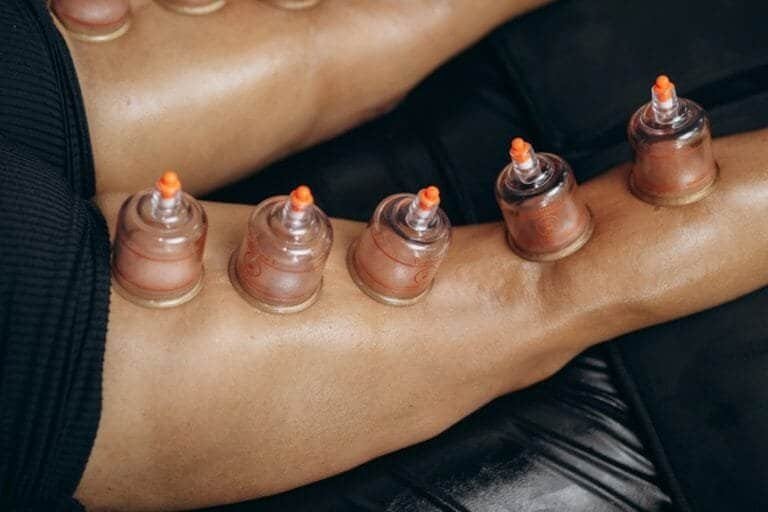When considering HGH therapy options, it's essential to compare therapies like Sermorelin and synthetic HGH. Sermorelin stimulates natural hormone production, offering safety and lower costs. In contrast, HGH provides quicker results but comes with higher risks and expenses. Treatment goals vary for adults and children, emphasizing the need for personalized care. Monitoring your progress is crucial for ideal outcomes. Discovering more about these differences can help you make an informed choice for your health journey.
Key Takeaways
- HGH therapy provides immediate effects but may disrupt natural hormonal balance, unlike Sermorelin, which stimulates natural production more gently.
- Costs for Sermorelin range from $200 to $400 monthly, significantly lower than HGH, which ranges from $1,000 to $5,000.
- Sermorelin has a safer profile with fewer serious side effects, while HGH can lead to complications like acromegaly and insulin resistance.
- Treatment goals vary by age, with adults focusing on body composition and children on growth, necessitating tailored monitoring strategies.
- Accessibility to HGH therapies depends on insurance coverage and requires valid medical need documentation, contrasting with more straightforward access to Sermorelin.
Understanding HGH Therapy: The Basics

Understanding HGH therapy starts with knowing what human growth hormone (HGH) is and what it does for your body. Produced by the pituitary gland, HGH plays a critical role in growth during puberty and influences metabolism by enhancing the production of insulin-like growth factor-1 (IGF-1).
Natural HGH production occurs in pulses, regulated by hormones like growth hormone-releasing hormone (GHRH) and somatostatin. As HGH production declines with age, HGH therapy can offer several benefits, including improved muscle strength, enhanced bone density, better mood, and restored sleep patterns. It's important to note that HGH therapy often involves daily injections, making consistency key to achieving optimal results. Additionally, synthetic HGH can successfully mimic the natural hormone's effects when produced correctly.
It's vital to understand the importance of quality synthetic HGH for effective therapy, ensuring that you maximize these HGH benefits while minimizing risks associated with improper use.
How Sermorelin Works Compared to HGH
When exploring HGH therapy options, it's important to recognize how Sermorelin and HGH function differently in the body.
The Sermorelin mechanism stimulates your pituitary gland to release endogenous growth hormone, promoting natural pulsatile secretion patterns. This method maintains your body's neuroendocrine balance while avoiding overdoses through negative feedback from somatostatin.
In contrast, HGH therapy involves direct hormone replacement, leading to immediate HGH benefits, such as rapid muscle growth and fat loss. However, this approach can disrupt natural rhythms and may result in tachyphylaxis over time.
Ultimately, if you're seeking a natural stimulation of growth hormone, Sermorelin may be more suitable, while those wanting quicker results may lean towards HGH therapy.
Safety Profiles: Sermorelin vs. HGH

How do the safety profiles of Sermorelin and HGH compare?
- Lower Hormonal Risks: Sermorelin safety is enhanced by stimulating natural HGH production, reducing risks like acromegaly and insulin resistance often associated with direct HGH therapy.
- Mild Side Effects: Common side effects of Sermorelin include mild injection-site reactions and transient headaches, whereas HGH risks include more serious complications.
- Long-Term Monitoring: While both therapies require monitoring, Sermorelin minimizes hormonal overload, making it a safer choice for those concerned about dependence on external hormones.
Choosing between Sermorelin and HGH should focus on the balance between efficacy and safety, with Sermorelin offering a more natural and balanced approach to boosting HGH levels.
Cost Comparison: Sermorelin and HGH Therapy
Cost is a crucial factor when considering Sermorelin versus HGH therapy, with Sermorelin typically costing between $200 and $400 a month, while HGH expenses can soar to $1,000 to $3,000 monthly.
These cost variations often depend on dosage and treatment duration, as longer therapies might offer subscription models for savings. Most patients self-pay for Sermorelin since insurance rarely covers it, especially for anti-aging or weight loss.
Sermorelin's affordability makes it more accessible, while HGH's high price can limit options. Understanding payment options, such as subscription plans for Sermorelin, can help manage your financial commitment.
Both therapies require a prescription, but Sermorelin offers more flexible prescribing protocols, enhancing its accessibility.
Treatment Goals: Adults vs. Children

Understanding the different treatment goals for adults and children undergoing growth hormone therapy is essential for optimizing outcomes. The treatment efficacy in each group varies based on their specific needs and growth patterns.
- Adults: Focus on improving body composition, bone density, and metabolism to enhance quality of life.
- Children: Aims to promote normal growth, increase height, and improve overall development, particularly in those with growth disorders.
- Long-Term Outcomes: Both groups benefit from improved health, but adults concentrate on muscle mass and metabolic health while children focus on achieving growth milestones.
Recognizing these differences helps tailor therapy effectively, ensuring that you or your child receives the best care possible for their unique situation.
Side Effects: What to Expect From Each Therapy
When considering HGH therapy, it's important to be aware of the potential side effects that can accompany treatment.
While you may experience significant HGH benefits, such as increased energy and improved muscle growth, there are also HGH drawbacks. Common side effects include muscle aches, joint pain, and headaches.
Fluid retention can lead to swelling in your hands and feet, while carpal tunnel syndrome may develop from excess fluid. Long-term use raises concerns about increased cancer risk, hypertension, and glucose intolerance.
You should monitor blood sugar levels closely, particularly if you're diabetic. Make sure to consult a healthcare professional to navigate these risks and tailor your treatment effectively.
Peptide Alternatives: Beyond Sermorelin and HGH

When exploring peptide alternatives like Tesamorelin, CJC-1295, and Ipamorelin, you'll discover unique benefits tailored to your health needs.
Each peptide works differently to enhance growth hormone release, support weight loss, and promote muscle recovery.
Understanding these options can help you find a more personalized and effective therapy.
Tesamorelin Benefits Explained
Tesamorelin offers a range of benefits that make it an appealing choice for those seeking alternatives to traditional HGH and sermorelin therapies.
Understanding the tesamorelin advantages can help you decide if it's right for you. Here are three key benefits:
- Fat Reduction: Tesamorelin effectively reduces visceral adipose tissue, helping combat abdominal obesity.
- Muscle Growth: By increasing IGF-1 levels, it supports muscle and bone development, enhancing your body composition.
- Cognitive and Health Improvements: Its mechanism stimulates GH secretion, which may lead to cognitive enhancements and improved cardiovascular health.
CJC-1295 and Ipamorelin Insights
Exploring peptide alternatives like CJC-1295 and ipamorelin can reveal new possibilities for those seeking effective ways to boost growth hormone levels.
CJC-1295 offers prolonged growth hormone increases with less frequent dosing, while ipamorelin provides short-term spikes but requires more regular administration. Combining both can amplify their effects, enhancing body composition and stamina.
| Feature | CJC-1295 | Ipamorelin |
|---|---|---|
| Half-Life | Several days | About 2 hours |
| Growth Hormone Action | Sustained increase | Short-term spikes |
| Dosing Frequency | Less frequent | More frequent |
| Primary Benefit | Fat loss, muscle gain | Muscle mass focus |
Understanding CJC 1295 benefits and ipamorelin dosing can help tailor approaches to individual goals, maximizing the efficacy of growth hormone therapy.
Monitoring and Dosage Adjustments in Hormonal Therapy
Regular monitoring is vital for the success of your HGH therapy, helping to track your progress and adjust dosages as needed.
By tailoring your treatment based on individual responses, you can enhance the effectiveness of the therapy while minimizing potential side effects.
This proactive approach guarantees that you achieve your therapeutic goals safely and efficiently.
Importance of Regular Monitoring
How can you guarantee the effectiveness and safety of your HGH therapy? Regular monitoring is essential, and here's why:
- Optimizes Efficacy: Close monitoring of IGF-1 levels helps in evaluating therapy effectiveness and making necessary adjustments.
- Mitigates Side Effects: Frequent evaluations reduce the risk of complications like joint pain and insulin resistance by ensuring timely modifications.
- Addresses Adherence Challenges: Tools like Easypod TM can track your adherence frequency, helping to maintain commitment to your treatment plan.
Tailoring Dosages for Effectiveness
When you're undergoing HGH therapy, tailoring dosages effectively is vital for maximizing benefits while minimizing risks.
You'll typically start with low doses of around 0.8 to 1.0 IU/day. Adjustments are important, as your individual response to the treatment may vary. Doses usually shift every 4 to 8 weeks based on serum IGF-I levels, ensuring ideal therapeutic effects.
Be aware of dosage challenges, particularly regarding gender differences; females may need higher doses to achieve similar IGF-I levels as males.
Regular monitoring of IGF-I and clinical symptoms helps guide these adjustments. Gradual increases in dosage can enhance effectiveness while mitigating potential side effects, keeping your treatment both safe and personalized.
Long-Term Effects of Sermorelin Compared to HGH

While both Sermorelin and HGH provide significant benefits for growth hormone levels, their long-term effects diverge in important ways.
- Long Term Sustainability: Sermorelin offers a gradual, natural increase in hormone levels, supporting sustained benefits.
- Lower Side Effects: With fewer pronounced side effects, Sermorelin tends to maintain a balanced hormonal environment, reducing dependency risks.
- Physiological Balance: By stimulating the pituitary gland, Sermorelin promotes natural hormone production over HGH's direct administration, minimizing fluctuations.
These sermorelin advantages contribute to a healthier approach to growth hormone therapy.
While HGH may provide rapid results, the lasting effects of Sermorelin make it a compelling option for those prioritizing long-term health and hormonal balance.
Accessibility and Insurance Coverage for HGH Therapies
When considering HGH therapy, it's essential to understand the variability in insurance coverage and prescription requirements.
Insurance providers often have specific policies that affect how much treatment is covered, which can impact your access to necessary medications.
Additionally, you'll need to navigate prescription guidelines that vary by condition, making it important to be well-informed about your options.
Insurance Coverage Differences
Understanding the differences in insurance coverage for HGH therapies is critical, as these variances can greatly impact your access to necessary treatments.
Knowing your options can empower you substantially. Here are three key points to reflect on:
- Insurance Policy Variations: Different insurers have unique policies, often resulting in varying access to coverage for HGH therapies.
- Coverage Eligibility Criteria: Conditions like idiopathic short stature are typically excluded, while Growth Hormone Deficiency usually qualifies for coverage.
- Brand Limitations: Insurers may restrict coverage to specific brands, making it challenging to maintain consistency in your treatment.
Navigating through these aspects can help you make informed decisions regarding your HGH therapy.
Understanding these variables is essential for maximizing your insurance benefits.
Prescription Requirements Explained
A prescription for HGH therapy requires careful consideration of specific medical criteria and thorough evaluations.
You must demonstrate a valid medical need, such as growth hormone deficiency, backed by diagnostic tests like insulin-like growth factor-1 (IGF-1) blood tests.
Meeting the HGH regulations involves having an extensive wellness exam, reviewing medical history, and fulfilling eligibility criteria, including passing growth hormone stimulation tests.
Prescriptions can only be obtained through licensed healthcare providers who can monitor treatment efficacy and safety.
Costs for HGH therapy can be high, often between $1,000 and $5,000 monthly, but some clinics offer financial assistance plans.
Always avoid counterfeits sold without prescriptions; they're risky and potentially harmful.
Frequently Asked Questions
Can HGH Therapy Help With Weight Loss?
Yes, HGH therapy can aid weight loss by increasing lean mass and reducing visceral fat. Combining it with a hypocaloric diet enhances its benefits, making it a potent tool for effective weight management.
Are There Age Restrictions for HGH Therapy?
Yes, there are age eligibility criteria for HGH therapy. Hormone guidelines recommend starting treatment early in childhood to maximize growth potential, but adolescents and adults may also receive it based on ongoing deficiency assessments.
How Quickly Can I Expect Results From HGH or Sermorelin?
You can expect initial results from HGH therapy within a few weeks, with significant changes developing between three and six months. Treatment duration impacts how quickly you'll experience improvements in energy, muscle mass, and overall wellbeing.
What Lifestyle Changes Complement HGH or Sermorelin Therapy?
To complement HGH or sermorelin therapy, you'll want dietary adjustments that reduce sugar and increase glutamine. Incorporate high-intensity exercise routines, as they greatly boost HGH levels while enhancing overall health and well-being.
Can HGH or Sermorelin Improve Athletic Performance?
Imagine leveling up in a video game. HGH benefits include rapid muscle growth, while Sermorelin effects enhance endurance and recovery. Both may boost your performance, but weigh their risks and legalities carefully before deciding.
Conclusion
In summary, traversing the landscape of HGH therapy options is like finding your way through a dense forest; understanding the differences between treatments is essential for making informed decisions. Whether you choose Sermorelin or traditional HGH, each option has its unique benefits and considerations. As you weigh factors like safety, cost, and treatment goals, remember that the right path leads to better health and well-being. Take the time to chart your course wisely!
References
- https://livvnatural.com/what-is-the-best-growth-hormone-peptide/
- https://tulsamen.com/what-type-hgh/
- https://robertdebre.aphp.fr/wp-content/blogs.dir/137/files/2019/12/Recommandations-GHD-transition-et-adulte-2019.pdf
- https://www.webmd.com/fitness-exercise/human-growth-hormone-hgh
- https://my.clevelandclinic.org/health/articles/23309-human-growth-hormone-hgh
- https://antiagingky.com/blog/hgh-therapy-everything-you-need-to-know/
- https://www.physio-pedia.com/The_influence_of_human_growth_hormone_(HGH)_on_physiologic_processes_and_exercise
- https://en.wikipedia.org/wiki/Sermorelin
- https://pmc.ncbi.nlm.nih.gov/articles/PMC2699646/
- https://regenics.com/sermorelin-vs-hgh-key-differences-and-benefits-explained/






